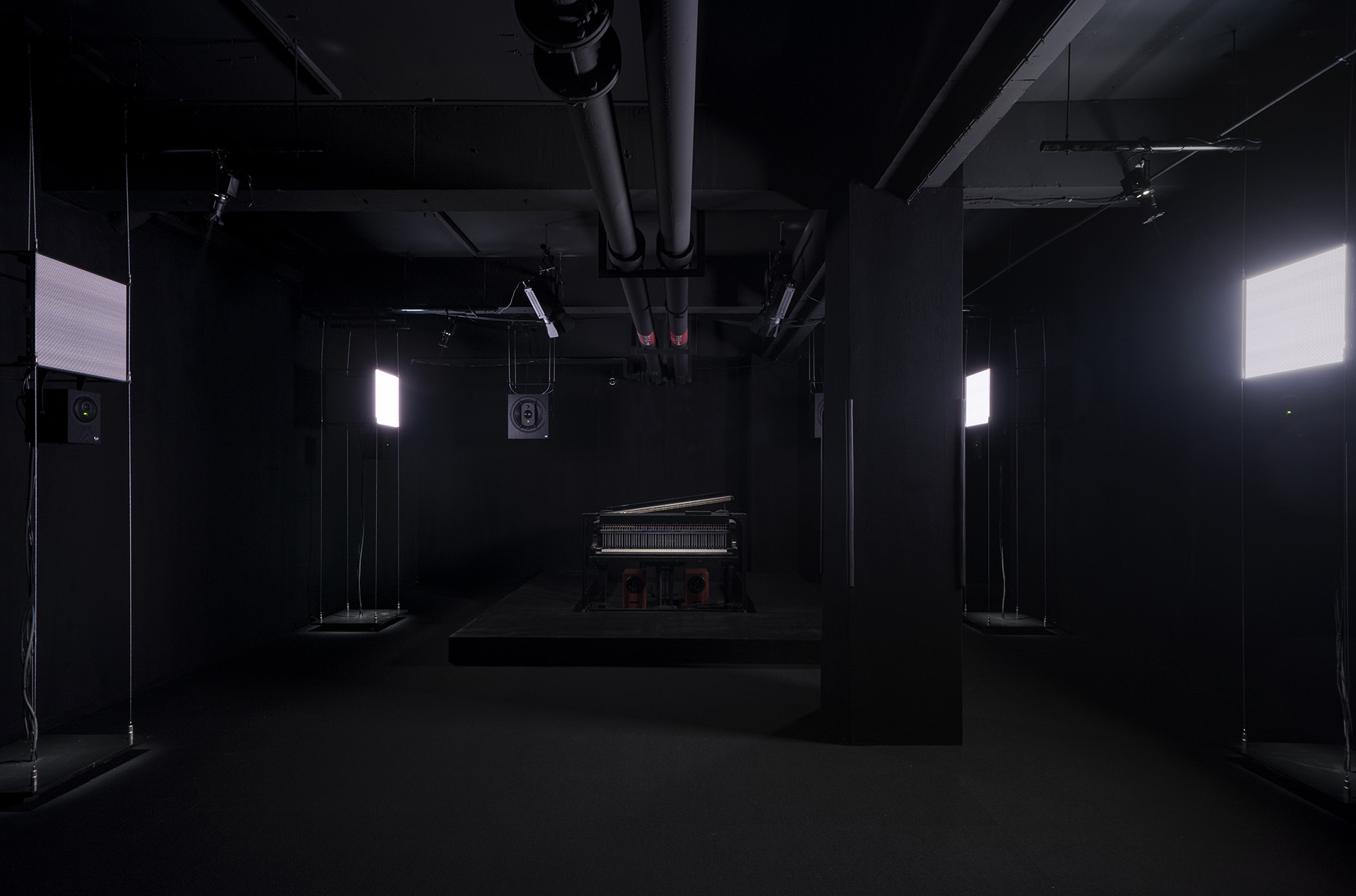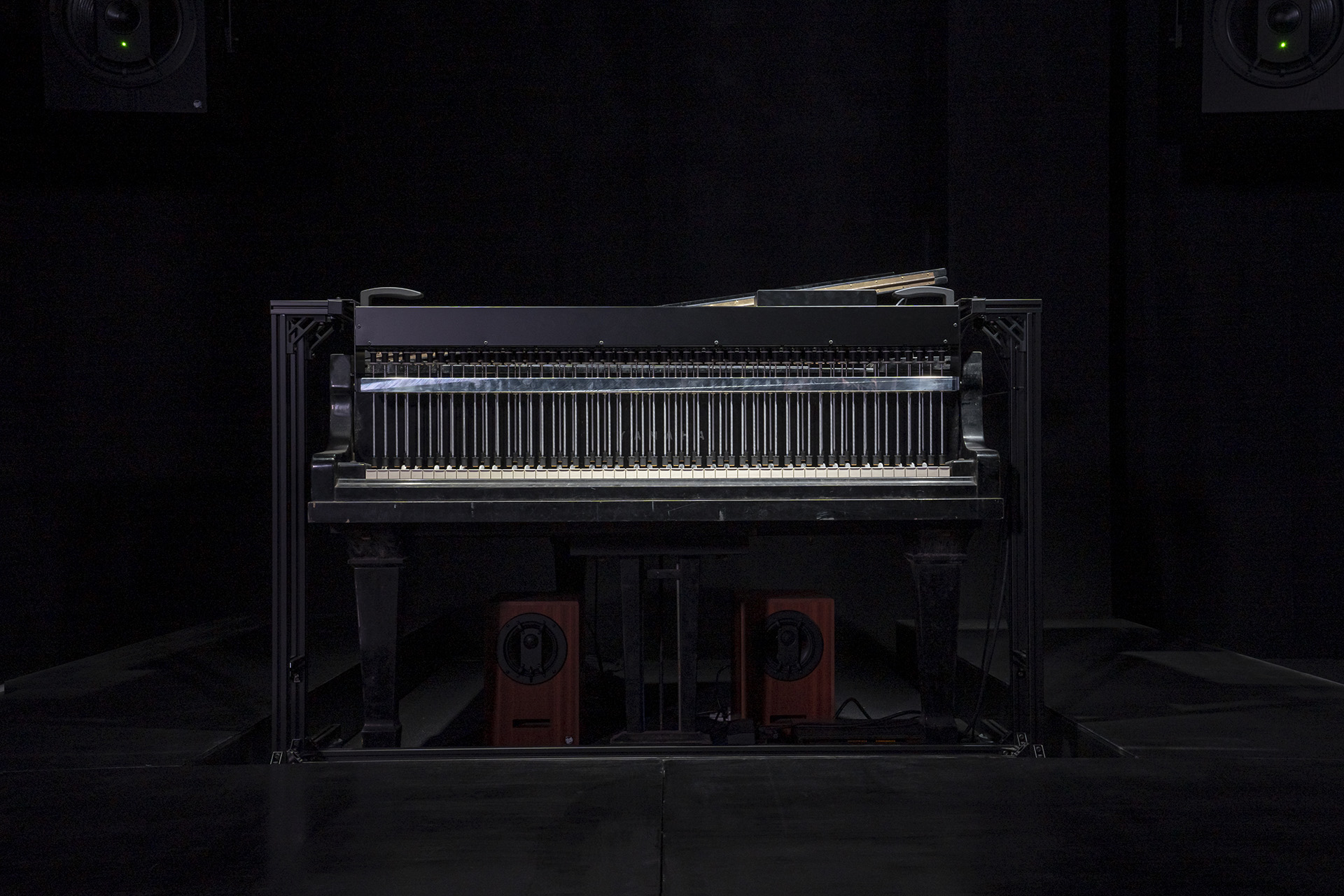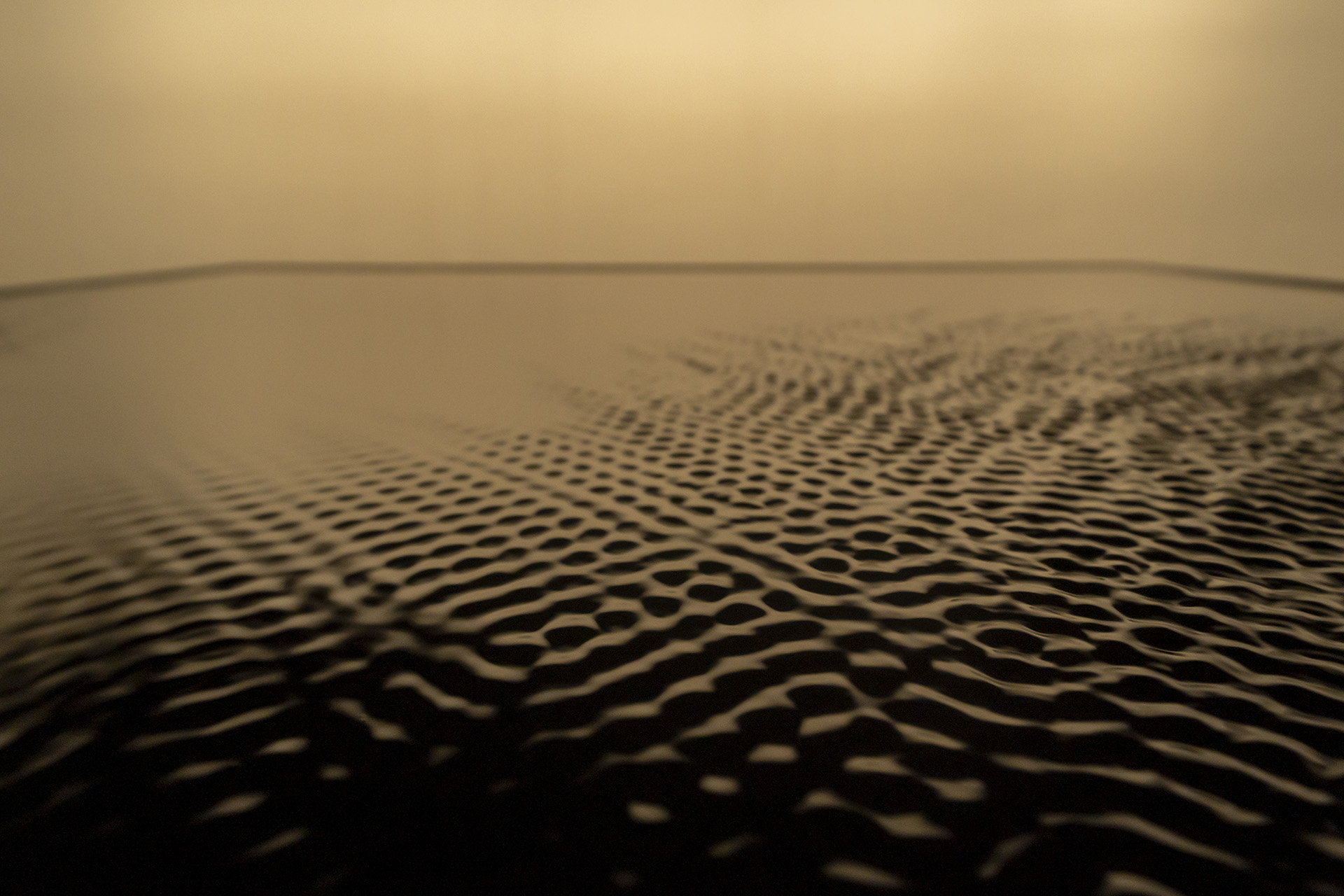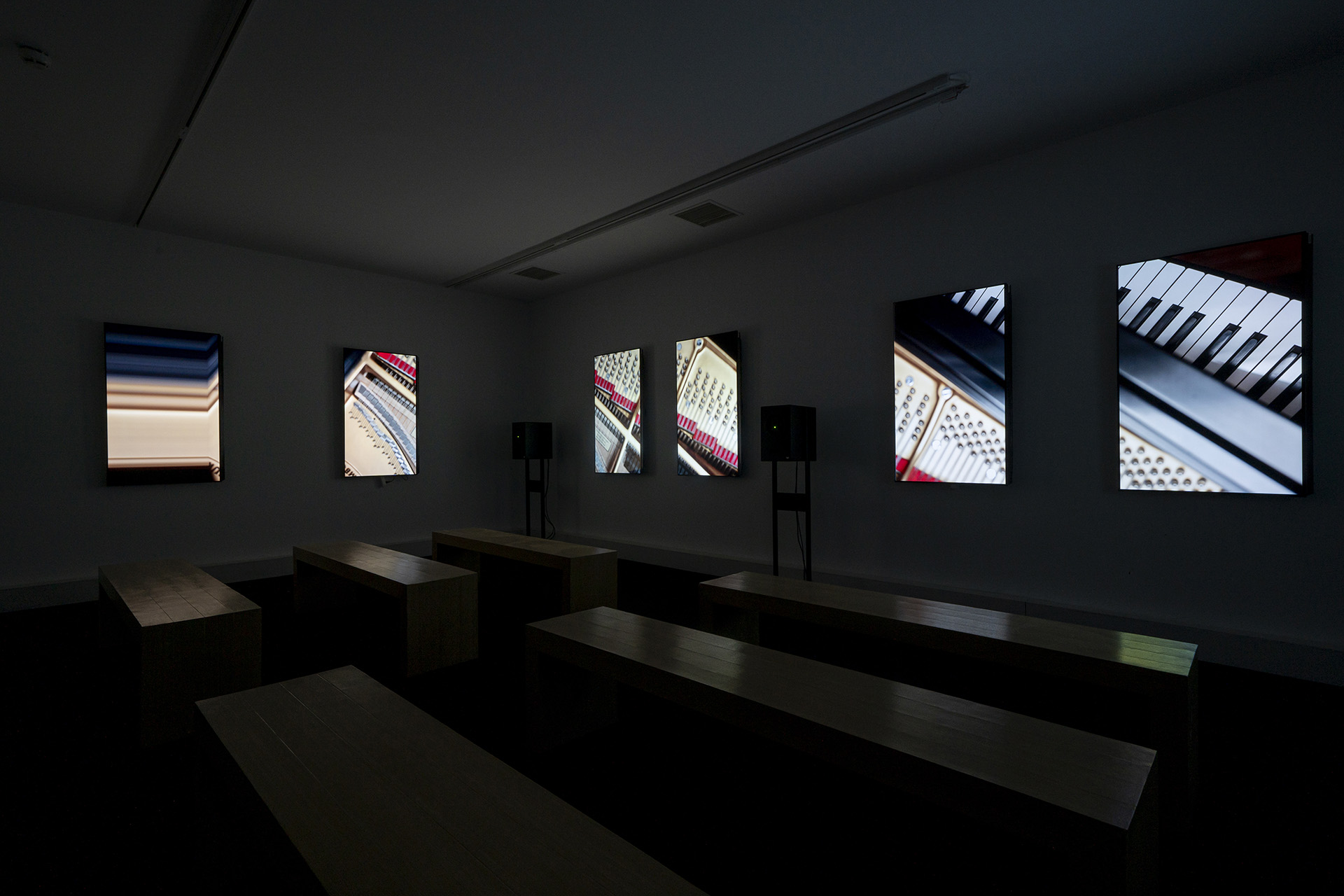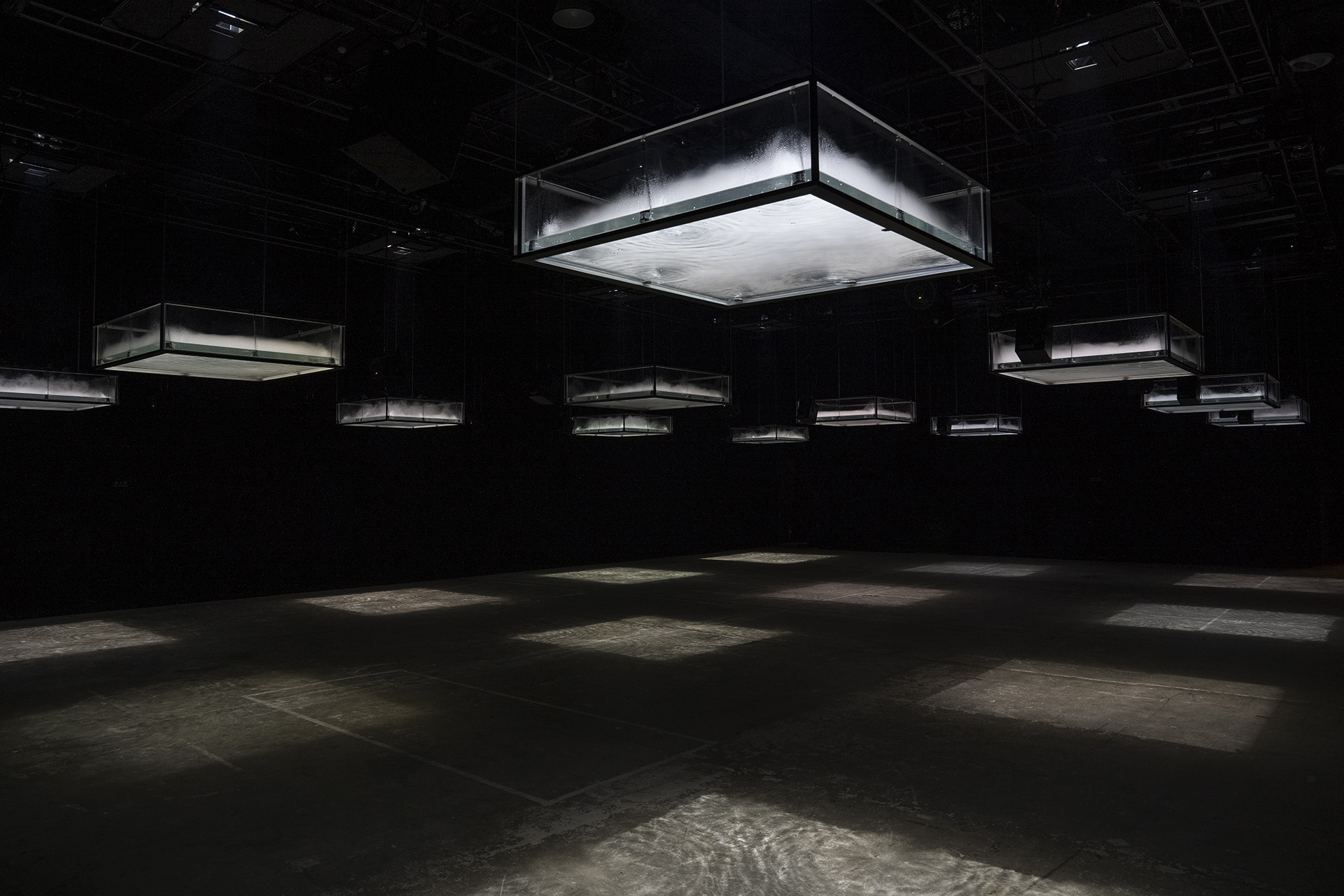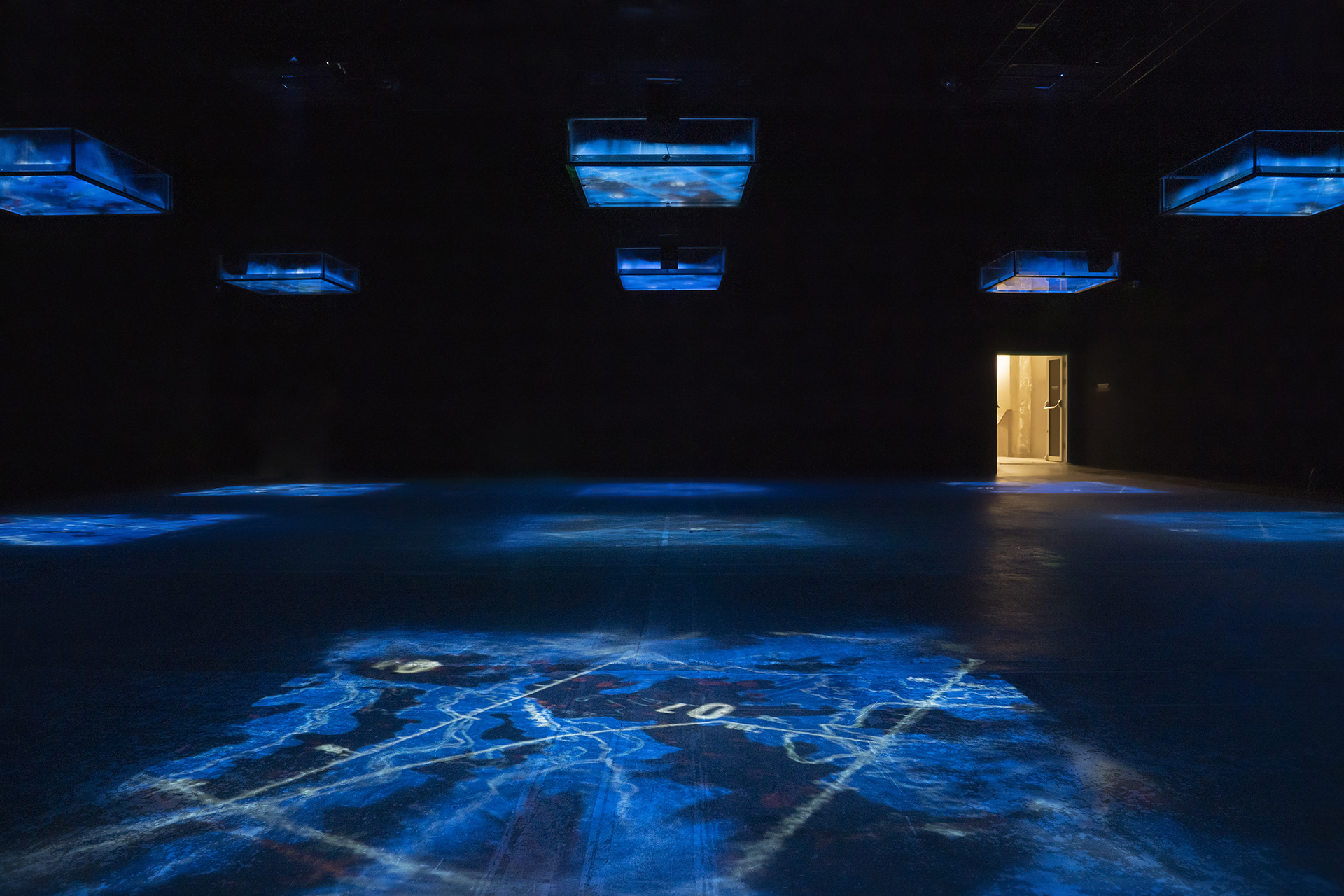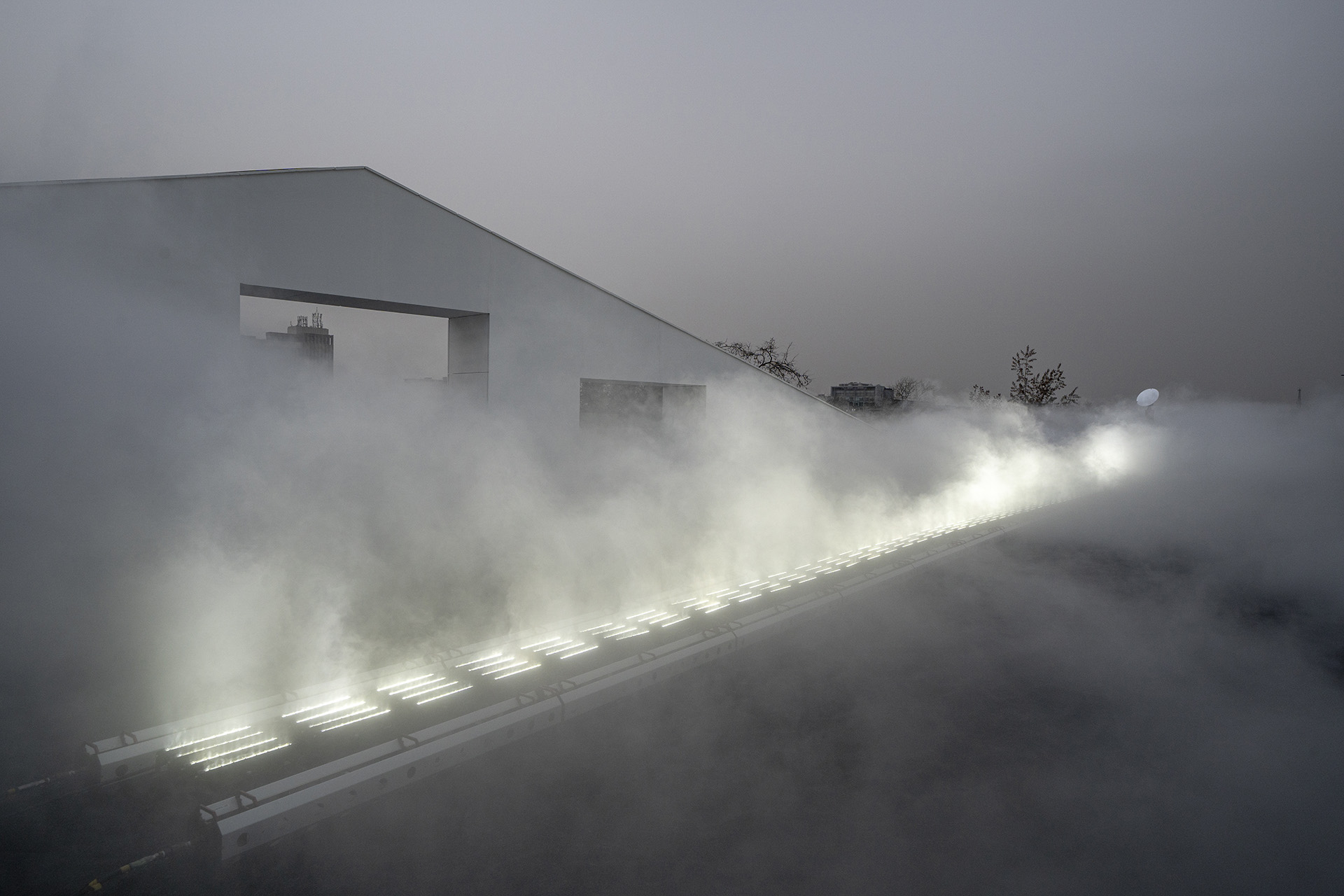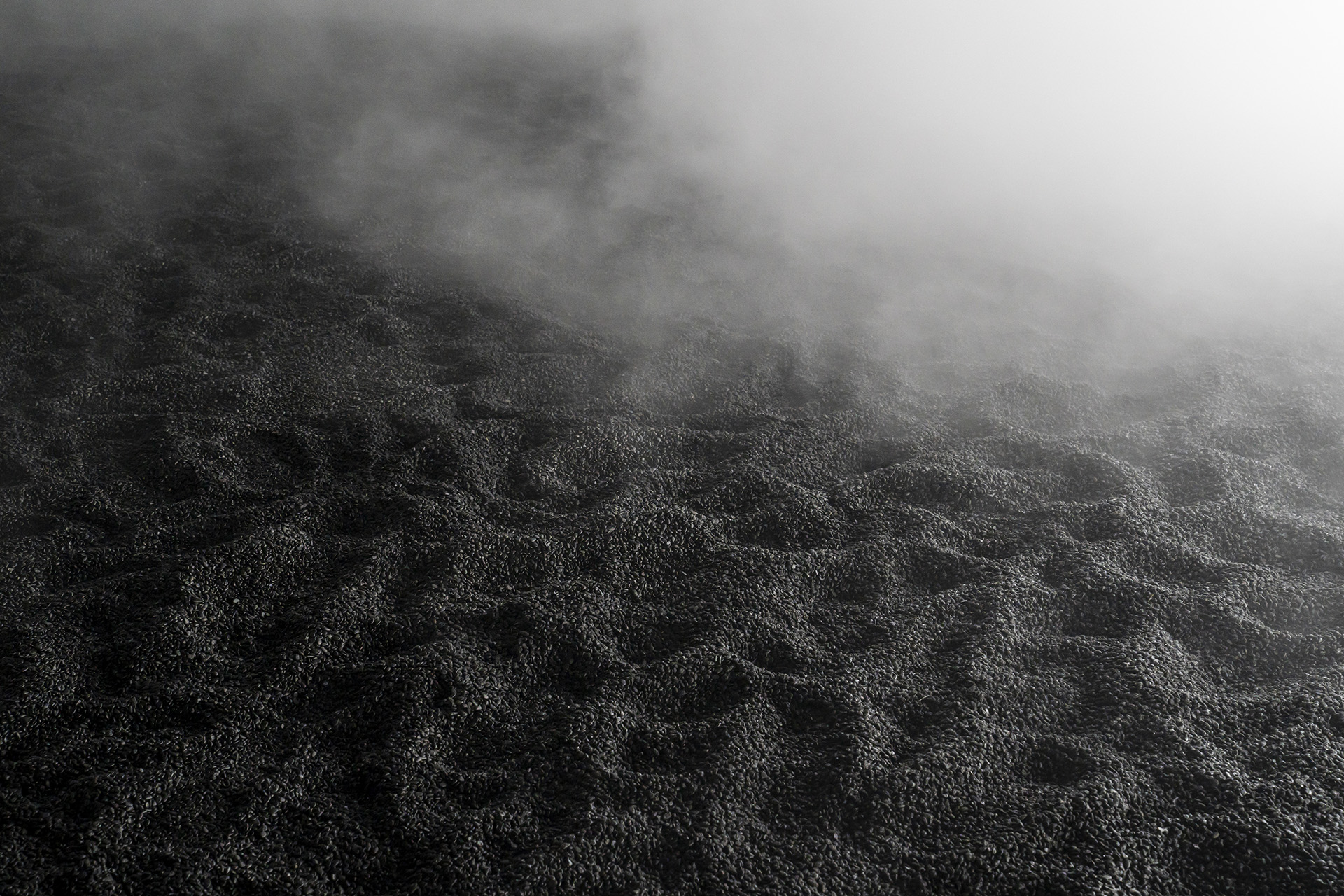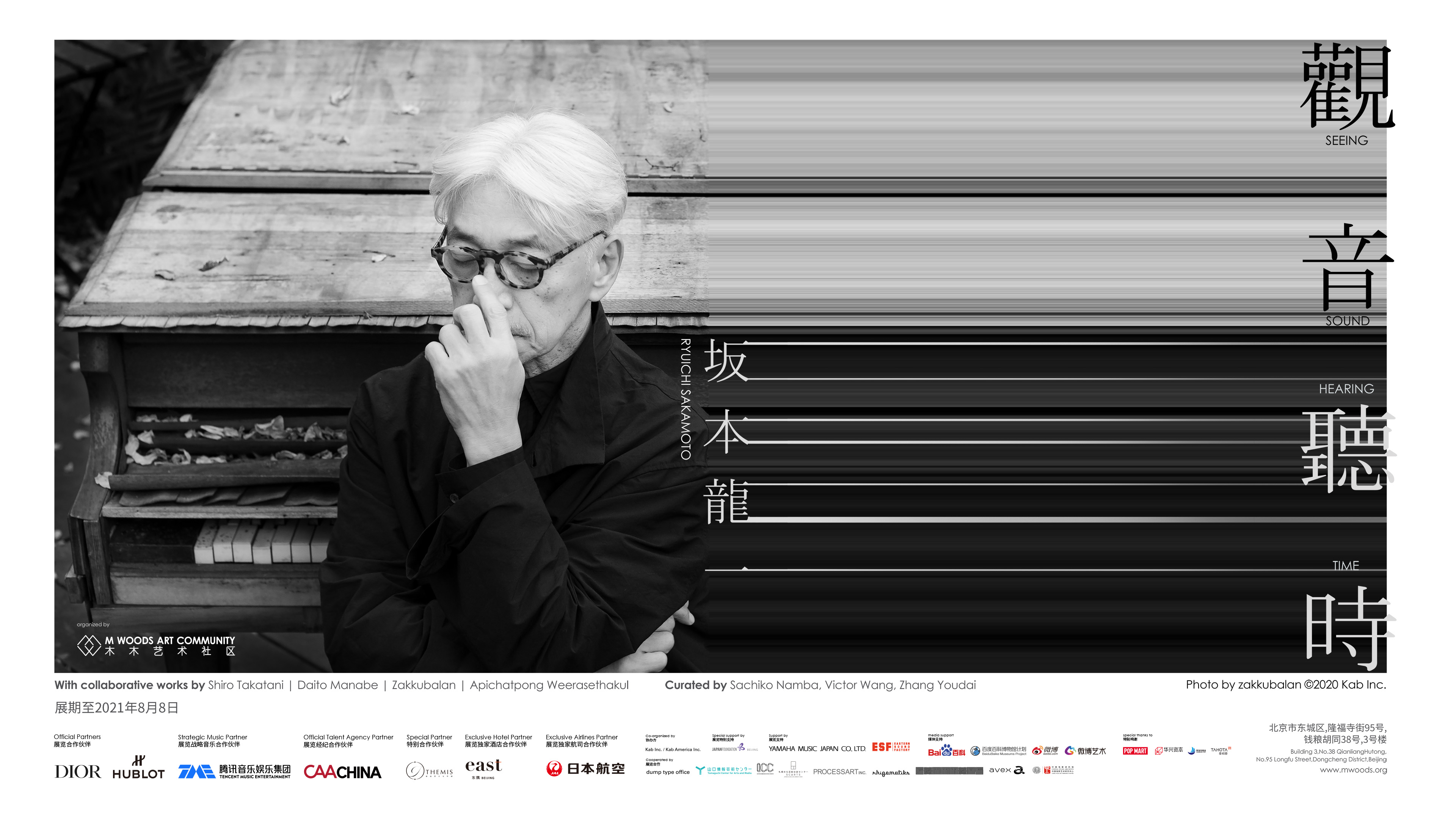
Ryuichi Sakamoto:
seeing sound
hearing time
Artists Name: Ryuichi Sakamoto
With collaborative works by Shiro Takatani | Daito Manabe | Zakkubalan |
Apichatpong Weerasethakul
Curated by Sachiko Namba, Victor Wang, Zhang Youdai
Exhibition Dates: March 2021 - August 8, 2021
Museum name and location:
M WOODS HUTONG
Qianliang Hutong 38, Building 3,
Longfusi St 95, Dongcheng, Beijing
M WOODS is proud
to present the largest and most comprehensive survey exhibition to date devoted
to Japanese composer and artist Ryuichi Sakamoto. The exhibition is Sakamoto’s
first institutional solo show in China, and centres around eight key large-scale
works and sound installations that redefine how we experience an album of music
or an art exhibition, while proposing different ways of understanding the world
through sound and technology.
![]()
Installation view, IS YOUR TIME, 2017, Ryuichi Sakamoto + Shiro Takatani, ‘seeing sound, hearing time’, courtesy M WOODS HUTONG, Beijing, 2021.
Ryuichi
Sakamoto believes that technology is the key to remaining aware of the world in
its entirety[1]. Since the
late 1970s, he has played a key role in redefining the intersection between sound
and art in Japan and internationally. From his cinematic scores, for which he
was awarded both an Oscar and a Grammy in 1988, and his influence on the
development of electronic music through the Japanese band Yellow Magic
Orchestra (YMO) to his current activist work on climate change, Sakamoto
continues to radically transform the way we think about creative practice and
the potential of art and music.
![]()
Installation view, IS YOUR TIME, 2017, Ryuichi Sakamoto + Shiro Takatani, ‘seeing sound, hearing time’, courtesy M WOODS HUTONG, Beijing, 2021.
As the title of this exhibition suggests, the survey offers
audiences a series of unique multi-sensory spaces that open up and describe
parts of the intangible world that were imperceptible to us before, through a
blend of audio and visual languages. Each gallery in the museum expands on
Sakamoto’s concept of ‘installation music’, in which the artist and his
collaborators have designed environments for audiences to experience sound
within a physical space as an ideal means of sharing music and sound.[2]
![]()
[3]
![]()
[4]
Installation view, water state 1, 2013, Ryuichi Sakamoto + Shiro Takatani, ‘seeing sound, hearing time’, courtesy M WOODS HUTONG, Beijing, 2021.
One
example is the work Is Your Time (2017), made in collaboration with
Shiro Takatani, which incorporates a piano that was washed up on the shore after
the tsunami from the Great East Japan Earthquake in 2011. For Sakamoto, this
piano represents the uncontrollable forces of nature that have shaped and molded
our environment, including this piano, along its journey from land to sea and
back to land again. Sakamoto believes that these forces, to a degree, are also
contained within the vessel of this instrument, and can therefore express new
sounds and tones as a result of its exposure to the natural elements and this
global event.
![]()
[5]
Installation view, async – drowning, 2017, Ryuichi Sakamoto + Shiro Takatani, ‘seeing sound, hearing time’, courtesy M WOODS HUTONG, Beijing, 2021.
At the centre of the
exhibition is the complex audio-visual installation LIFE – fluid, invisible,
inaudible… (2007/2021), also made with Shiro Takatani, highlighting an important point of
departure for the artist into the expanded territory of experiential sound
spaces. The work contains two important sub-currents: the breaking of the
unilateral experience of opera, here achieved through the recreating and
deconstructing of Sakamoto’s 1999 opera LIFE. And secondly, the integration
of technology, image, and nature to achieve what Sakamoto calls the ‘the
interstices of sound and image’, here configured by the experience of walking
through a Japanese garden. Originally commissioned in 2007 by Yamaguchi Center
for Arts and Media (YCAM), with nine custom made ‘water tanks’, here at M WOODS,
the work will be shown through an expanded version consisting of twelve water tanks.
These tanks are suspended in the air like image clouds. Each one produces an
intricate mix of sound, artificial fog, and video clips – organized by a
taxonomical system – that are projected onto the floor with images from Sakamoto’s
original opera.
![]()
[6]
![]()
[7]
Installation view, LIFE - fluid, invisible, inaudible…, 2007/2021, Ryuichi Sakamoto + Shiro Takatani, ‘seeing sound, hearing time’, courtesy M WOODS HUTONG, Beijing, 2021.
In the spring of 2017, Sakamoto released his first
solo album in eight years, async, and with it he re-contextualized the
way he wanted to both listen to and experience an album. async takes a
central role in the current exhibition, highlighting the difference between ‘listening’
to an album and ‘experiencing’ it in space, as Sakamoto calls ‘installation
music’. This concept of a experiential sound space, using async as a
type of medium or point of departure, alongside collaborators such as Zakkubalan
and Apichatpong Weerasethakul, is further explored in the series of asyncgalleries in the exhibition: ‘async – first light’, ‘async –
drowning’, and ‘async – volume’, which enable both a deeper
understanding of the album and, importantly, the chance to physically ‘enter’
the music through a space designed by Sakamoto and his collaborators.
The
exhibition also includes two outdoor site-specific installations that have been
modified especially for M WOODS, located on our museum rooftop and ninth-floor
rooftop. One of which is Sensing Streams(2014/2021), originally made in 2014 with Daito Manabe, this new
version has been converted from its original format and integrated into the
existing architecture of the rooftop. Also present will be two temple galleries
that highlight Sakamoto’s cinematic scores, including The Last Emperor(1987), accompanied by a special set of photographic images by artist Basil Pao
taken during the making of the film, and Merry Christmas Mr. Lawrence (1983).
Accompanied by an exhibition catalogue and a series of live events and
programming, the exhibition ‘seeing sound / hearing time’ will provide a
critical overview of Ryuichi Sakamoto’s artistic practice.
![]()
[8]
![]()
[9]
![]()
[10]
Installation view, LIFE-WELL Installation (Beijing version), 2013/2021, Ryuichi Sakamoto + Shiro Takatani, ‘seeing sound, hearing time’, courtesy M WOODS HUTONG, Beijing, 2021.
[1] Ryuichi Sakamoto, ‘Life L I f e ’,catalogue,
GLINT, Korea, p. 41
[2] Kazunao Abe, Ryuichi Sakamoto, INSTALLATION, SPACE, Ryuichi
Sakamoto, Life, Life, p. 111
About the artist:
Ryuichi Sakamoto has lived many musical lives in his nearly 70 years. As a member in Haruomi Hosono’s Yellow Magic Orchestra, he helped set the stage for synthpop. His solo experiments in fusing global genres and close studies of classical impressionism led to him scoring over 30 films in as many years, including Nagisa Oshima’s Merry Christmas, Mr Lawrence, Bernardo Bertolucci’s The Last Emperor and The Sheltering Sky, Alejandro González Iñárritu’s The Revenant, and most recently Andrew Levitas’ Minamata. In the past 20 years alone, he’s written a multimedia opera, turned a glass building into an instrument, and travelled to the Arctic to record the sound of melting snow. That exploratory spirit runs through Sakamoto’s 2017 album, async, which paints an audio portrait of the passing of time informed by his recovery from throat cancer. “Music, work, and life all have a beginning and an ending,” said Sakamoto in early 2019. “What I want to make now is music freed from the constraints of time.”
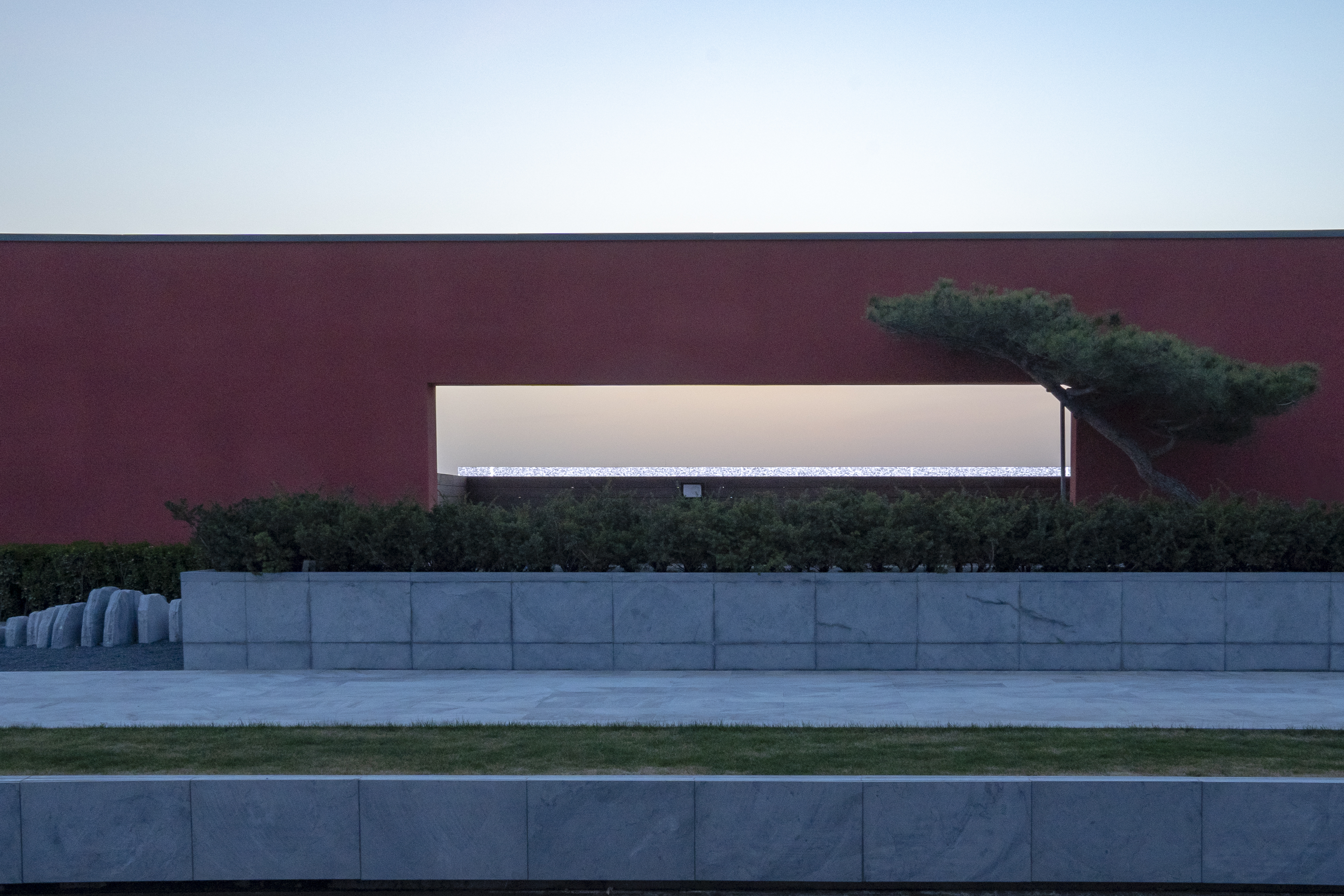
[11]
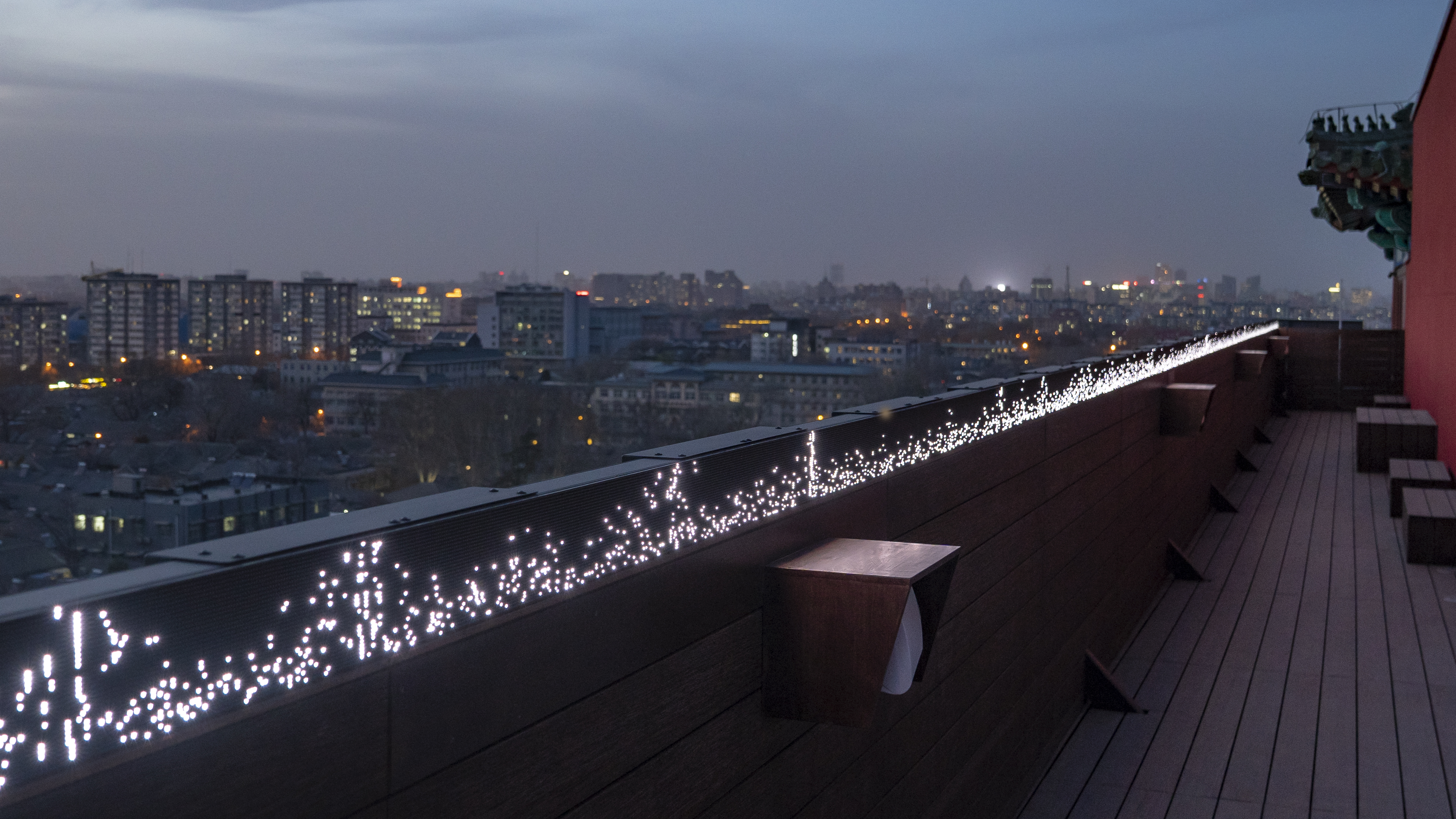
[12]
About
the curators:
Sachiko
Namba: After serving as curator at the Museum of Contemporary Art Tokyo,
Sachiko Namba has curated a number of international exhibitions in and outside
of Japan. She was appointed as Program Director (Visual Arts), Arts and Culture
Dept., The Japan Foundation between 2016 and 2020. She has authored works
including “Curating Contemporary Art in Japan: 1950s to the Present” and
“Curating Contemporary Art in Japan: Exhibition-Making Handbook.” Her
curatorial projects include “Garden for Children” (2010, Museum of Contemporary
Art Tokyo), “Breathing Atolls: Japan-Maldives Contemporary Art Exhibition”
(2012, National Art Gallery of the Maldives, Malé), and “TOKYOーSensing the
Cultural Magma of the Metropolis” (2015, Museum of Contemporary Art Tokyo). She
served as Curatorial Project Manager for the Sapporo International Art Festival
in 2014 (SIAF 2014) and curator for the Yokohama Paratriennale 2014.
Victor
Wang (王宗孚): is
currently Artistic Director and Chief Curator of the M WOODS museums in
Beijing. He was editor of the publication ‘Performance Histories from East Asia
1960s–90s’, Curator of Frieze Live for Frieze Art Fair London, (2020), and
founder of the ‘Institute of Asian Performance Art’. Prior to this, Wang
curated exhibitions between commercial and non-commerical institutions such as
Lisson Gallery, London, Nationalgalerie Berlin, Sadie Coles HQ, London, Wifredo
Lam Contemporary Art Center, Havana, and K11 Art Foundation, Shanghai, and
curated the first large-scale museum surveys in China of Giorgio Morandi;
Richard Tuttle; and the first institutional solo shows in China of Haroon
Mirza, Katja Novitskova, Jac Leirner, and Neïl Beloufa. Wang has written for art
periodicals such as Artforum, Art Review, and in 2016 he was awarded the AICA
Incentive Prize for Young Critics by the International Association of Art
Critics.
Zhang
Youdai: is the most influential Radio DJ in China, and is the founder of the
legendary music club Cloud Nine. In the 1980's, he found his love and passion
for music. After graduating from the department of drama literature, Central
Academy of Drama, he became the very first DJ in China to play Rock, Jazz and
Electronic music on a public radio station. For nearly 3 decades, Youdai has
continued to introduce good music and musicians to many generations of Chinese
listeners, from all over the world, through radio and the Internet. His well
known shows such as “New Rock Magazine”,
“Soundtrack
of My Life”, and “All That Jazz”, has made
him popular amongst the general public, and also influential to generations of
Chinese professional musicians.
Ryuichi Sakamoto quote:
“It
is a great pleasure to be invited to exhibit almost all of my sound
installations in China for the first time. Through my work, I hope people in
China can enjoy the boundary between sound and noise, between sound and
silence, and the interstices of sound and image.”
--
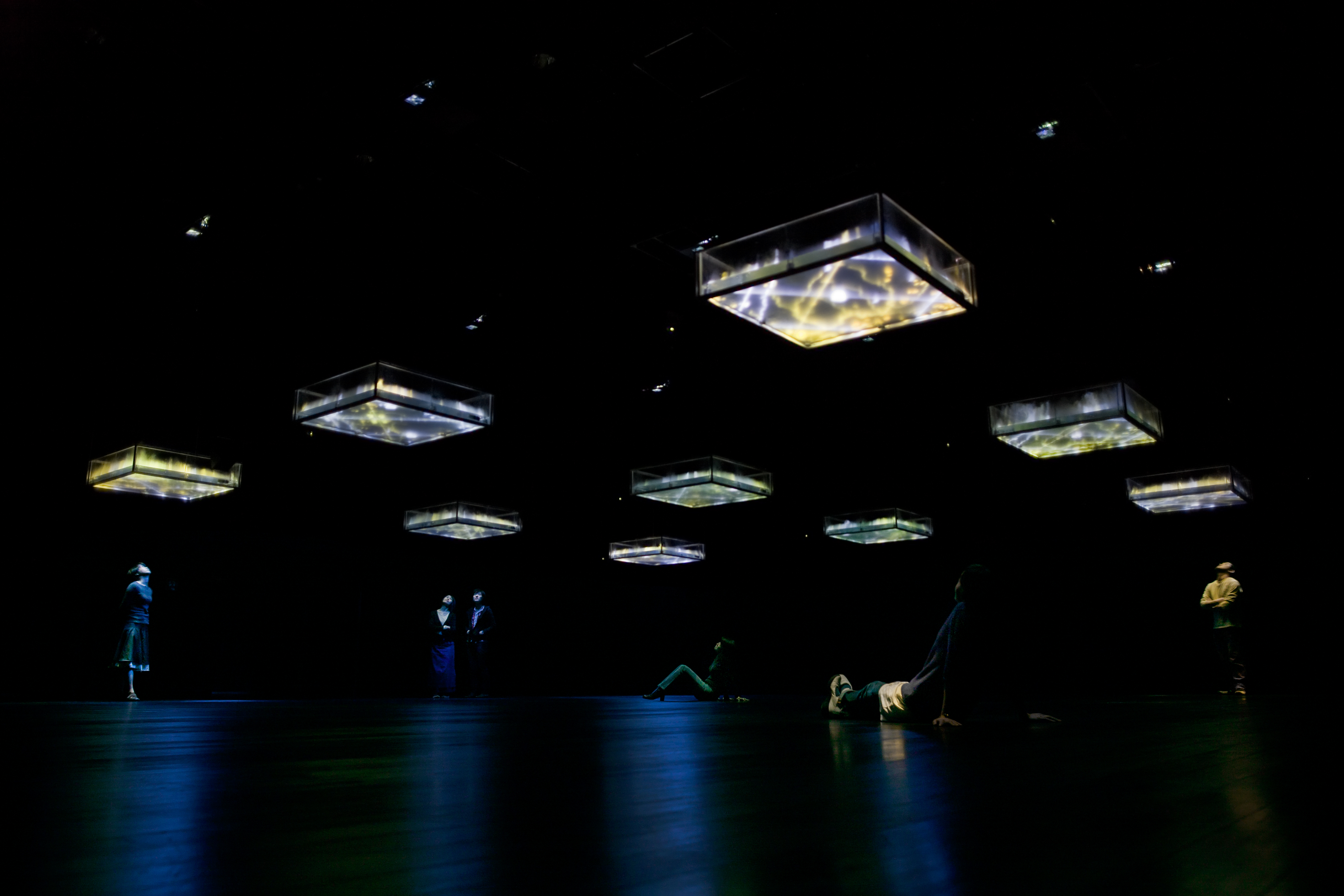



Ryuichi Sakamoto + Shiro Takatani , "LIFE - fluid, invisible, inaudible..." 2007 Photo: Ryuichi Maruo (YCAM) Courtesy of Yamaguchi Center for Arts and Media [YCAM]
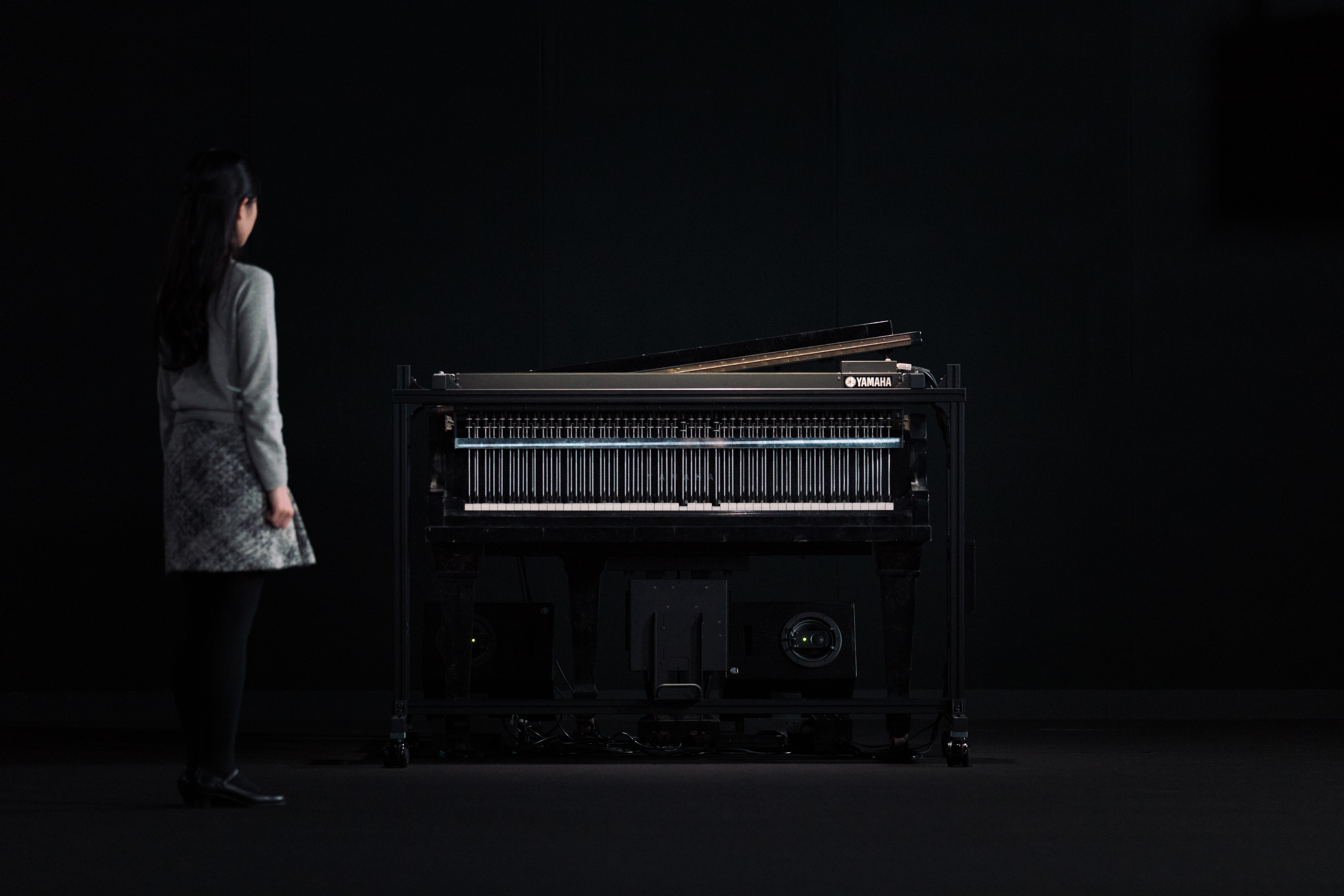
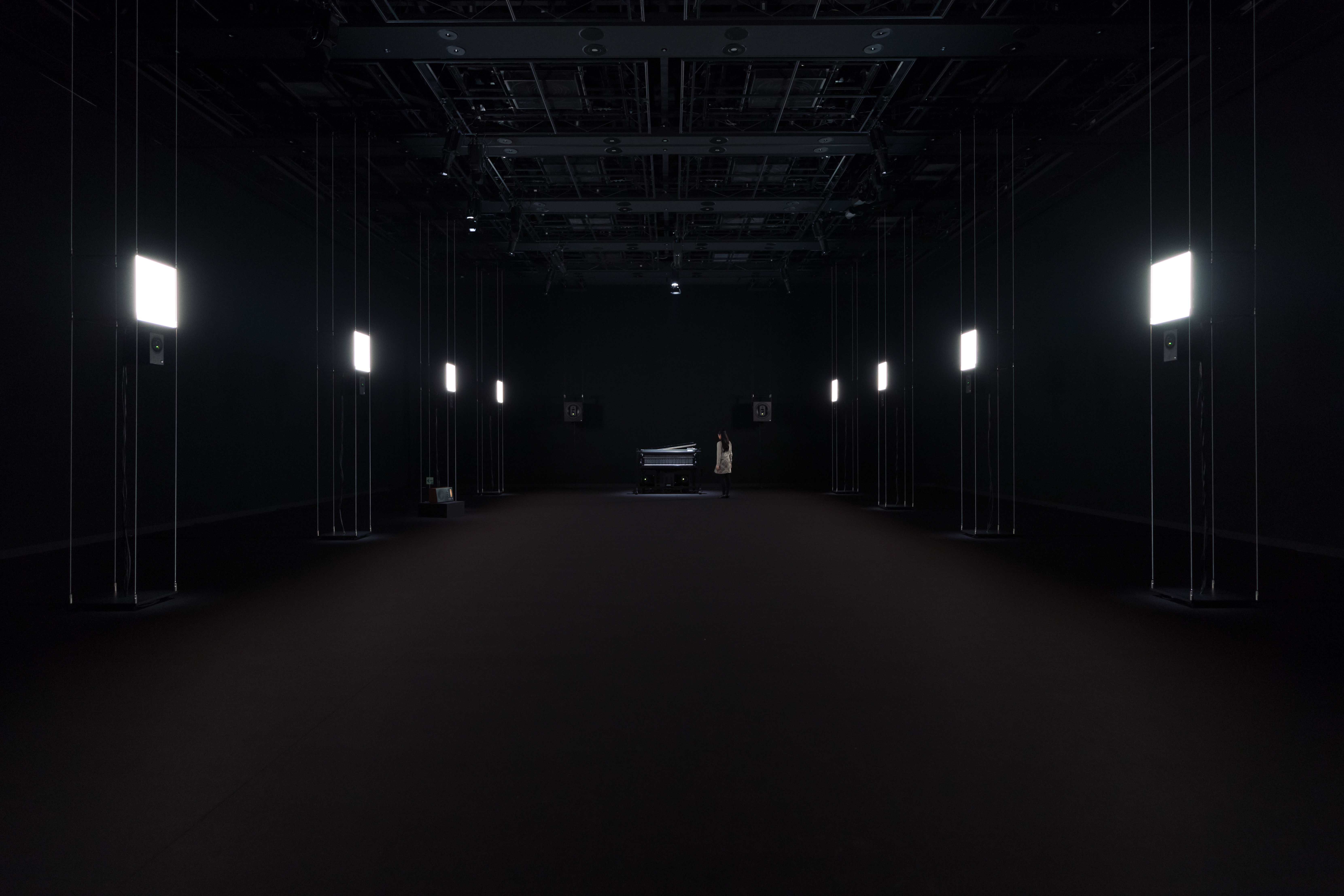
Ryuichi Sakamoto + Shiro Takatani, "IS YOUR TIME" 2017
Photo: Ryuichi Maruo
Courtesy of NTT Inter Communication Center [ICC]
--
Organized by:
M WOODS Art Community
Co-organized by:
Kab Inc. / Kab America Inc.
Special support by:
The Japan Foundation, Beijing
Supported by:
Japan Airlines Co., Ltd
YAMAHA MUSIC JAPAN CO., LTD.
EASTERN SOUND FACTORY
Cooperated by:
dumb type office
Yamaguchi Center for Arts and Media [YCAM]
NTT InterCommunication Center [ICC]
SAPPORO CULTURAL ARTS COMMUNITY CENTER(Sapporo Cultural Arts Foundation)
PROCESSART INC.
Rhizomatiks
Commmons
China Film Archive (China Film Art Research Center)
--
Opening hours of M WOODS
Tuesday – Sunday, 10am – 6pm
For press enquiries, please contact
chenlu@mwoods.org
i: @m__woods
fb:@mwoodsmuseum
Website: https://www.mwoods.org/
